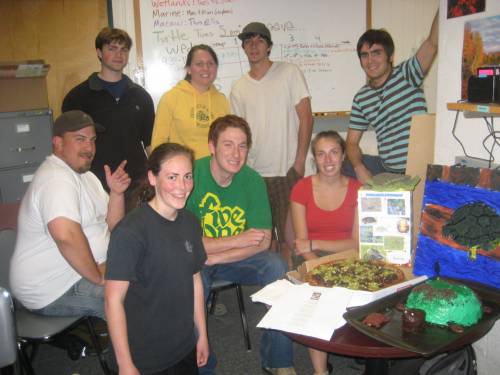 Our mission is to enhance Western Pond Turtle habitat restoration and population data by providing an accurate and thorough survey of potential habitat areas. The Western Pond Turtle populations have declined by an estimated 94% within recent history, leading to a critical/sensitive designation in Oregon. Collecting information on the quantity and quality of remaining habitat is a crucial first step to restoration and population recovery. It is the responsibility of the Environmental Leadership Program’s (ELP) Turtle Team to provide detailed habitat data for the Bureau of Land Management to inform their future restoration activities.
Our mission is to enhance Western Pond Turtle habitat restoration and population data by providing an accurate and thorough survey of potential habitat areas. The Western Pond Turtle populations have declined by an estimated 94% within recent history, leading to a critical/sensitive designation in Oregon. Collecting information on the quantity and quality of remaining habitat is a crucial first step to restoration and population recovery. It is the responsibility of the Environmental Leadership Program’s (ELP) Turtle Team to provide detailed habitat data for the Bureau of Land Management to inform their future restoration activities.
Active restoration efforts require a thorough knowledge of existing habitat conditions. In the Spring of 2006, the first Turtle team broke ground by surveying 25 polygons in the Dorena area. The 2007 team continued their work, assessing new habitats in the Dorena, Marcola, and Fall creek regions. Currently in 2008, the ELP at the University of Oregon has continued this project for its third consecutive year. Collaborating with the BLM, we have surveyed over 30 polygons identifing potential WPT habitat in Cottage Grove, McKenzie, Mohawk, Lost Creek, Fall Creek, and Row River watersheds. The ELP coordinator, Kirsten Runstamm, and the project leader, Will Truce, assisted our team of seven students in the completion of the project.
Each Friday, our team broke into three groups. The groups drove to polygons that the BLM determined were of a high, medium, or low priority. In the polygons, we hiked along streams to identify potential aquatic habitat for the Western Pond turtle. We also looked for upland habitat that was within 250 ft from the stream, or land that appeared beige on the aerial photo. Our efforts have required the use of sophisticated GPS units, the interpretation of maps and aerial photos, and the implementation of data collection protocols.
At the end of the project, we compiled data on 34 polygons within the Willamette Valley and provided a report for the BLM laying out our results. The BLM will consider polygons that demonstrate ideal turtle habitat for conservation projects. This project has been both fun and rewarding for the students involved.